Juventus are one of the greatest teams in European history and are currently the record holders for Serie A titles, winning the competition a total of 36 times since the club’s first league victory back in 1905.
It was in the 1970s when the Old Lady really started its upward trajectory on the continent though, especially after the appointment of Giovanni Trapattoni who guided the Bianconeri to six titles in a decade from 1977 to 1986.
It was also under Trapattoni that Juventus began to win European trophies, lifting the UEFA Cup in 1977 and the European Cup, now known as the UEFA Champions League, in 1985, as well as the UEFA Cup Winners’ Cup in 1984.
Since then, the Italian giants proceeded to dominate the nation’s competitions, particularly in the 2010s when the side managed to win nine Scudetti in a row under Antonio Conte and Massimiliano Allegri.
Some of the greatest players in football history have worn the famous black and white stripes such as Gianluigi Buffon, Alessandro Del Piero, Andrea Pirlo and Paolo Rossi. However, Rossi has been the only truly great academy product created by Juventus.
Since Rossi, Claudio Marchisio, Sebastian Giovinco and Ciro Immobile are the only academy players to have become household names which is surprising given the stature of Juventus as a club around the world.
Despite what has been an incredibly successful decade for the club, little to no notable players have emerged from their youth ranks. That was until 2018 when chairman Andrea Agnelli announced the creation of Juventus Next Gen, the club’s newest U23 side who compete in the third division of Italian football.
The Bianconeri have made a conscious effort to rectify the mistakes of their past and have pumped a lot of money into the project, hoping to produce some of Europe and Juve’s next great players.
So far, Juventus Next Gen has been a success. Already, the academy has seen exciting talents such as Gianluca Frabotta, Fabio Miretti, Nicolò Fagioli, and Félix Correia emerge from the reserves to play with the first-team and even become members of the squad.
Nonetheless, there is another name in the U23s that has been making waves and has already started to be a regular feature under Allegri in the main side. His name is Samuel Iling-Junior.
A youngster who spent the guts of nine years with Chelsea from 2011 to 2020, Iling-Junior then made the switch to Turin and his incredible performances for the Italian side have made some of Europe’s biggest clubs stand up and take notice.
This tactical analysis piece will be a scout report of the Juventus teenager, looking at his strengths and weaknesses as well as his role so far in Allegri’s tactics.
Player profile
Iling-Junior is a winger, an out-and-out winger. A distinction needs to be made between an inside forward and a winger.
In the modern game, the likes of Mohamed Salah, Sadio Mané, and Marcus Rashford have excelled between the lines, inverting to allow their fullback to advance higher up the pitch.
These types of players tend to play in pockets of space and link up with the centre-forward, operating almost as second-strikers and amassing a huge number of goals over the years.
Iling-Junior is a throwback to a more simplistic time in the sport when wingers were wide midfielders, and their sole aim was to beat the fullback and whip crosses into the box. But more on this later.
Since his arrival at Juventus, Iling-Junior has predominantly played on the left, holding a high position.
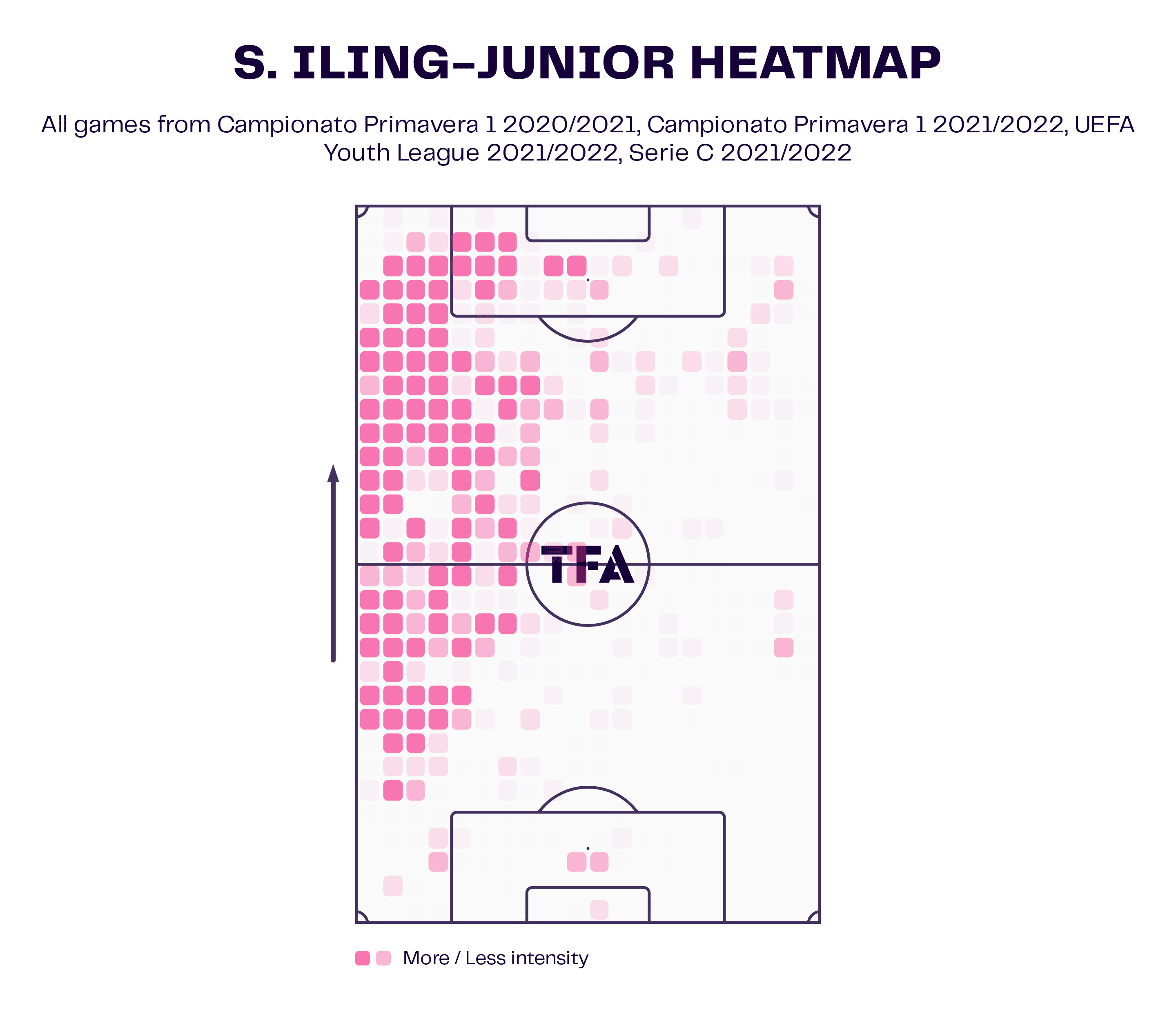
However, as this heatmap shows from the winger’s first two campaigns with the club, the Englishman has also been quite heavily involved in his own half of the pitch. This is because, on several occasions, Juve’s youth team coaches have deployed the teenager as a left-back, allowing him to learn the required defensive tools.
This is not uncommon for young players in the modern game. Many times, youngsters are asked to play positions they are not comfortable in to get a good feel of each role in the team.
For instance, Scott McTominay played as a striker in Manchester United’s youth ranks numerous times which has benefitted the Scotland international now as manager Erik ten Hag has positioned him just off the striker in a couple of matches.
Nevertheless, this season, Iling-Junior’s role has been much more refined, staying mainly as a left-winger in Juventus’ 4-4-2-cum-4-3-3 in possession in the U23s and the first-team, although he is also no stranger to the right side either.
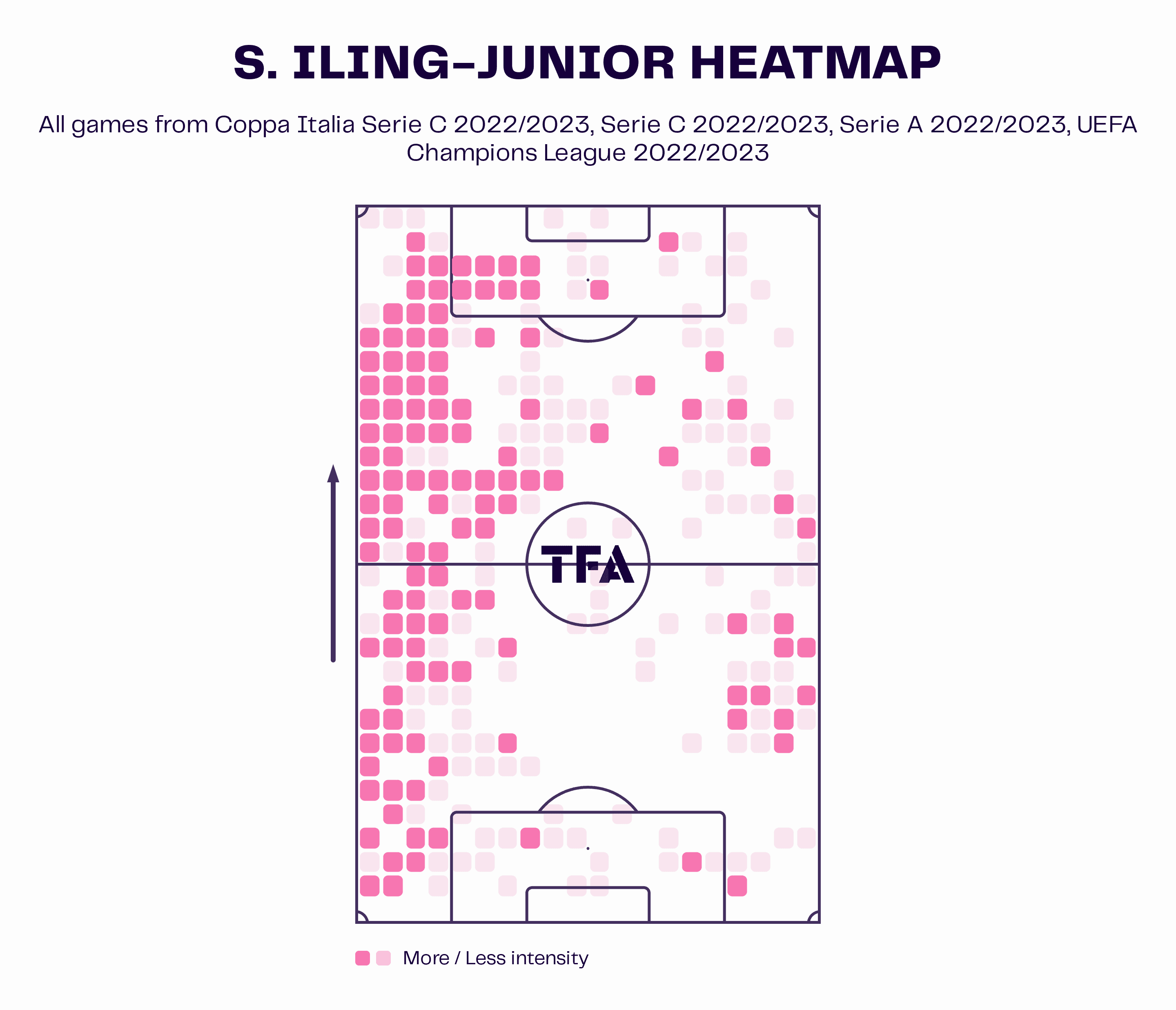
At 5’11” and 62kg, the 19-year-old is quite robust, making it really difficult for defenders to shrug him off the ball. Even in the men’s game, Serie A and Champions League players have bounced off the winger when trying to nick the ball back.
There is still some room for growth in terms of his height, but Juventus’ rising star has likely completed his development on this front.
An old-school winger
Reverting back to a point made in the previous section, Iling-Junior is quite a nostalgic player with regard to his overall game.
Inside forwards usually play on the opposite flank to their preferred foot. For example, Rashford plays off the left since he is right-footed, allowing him to cut inside and be more comfortable shooting across goal with his stronger foot.
Iling-Junior is left-footed, playing on the left flank, meaning he prefers to hug the touchline. Being used in a more inverted role on this same side would make it really difficult for him to get into excellent scoring positions as he would not be comfortable cutting inside onto his weaker right foot.
This plays well into Allegri’s tactical model. Normally, the left-back pushes inside and becomes an auxiliary centre-back alongside the two main central defenders. Because of this, somebody needs to hold the width on that side since the fullback doesn’t. This is where Iling-Junior is the perfect asset for Allegri.
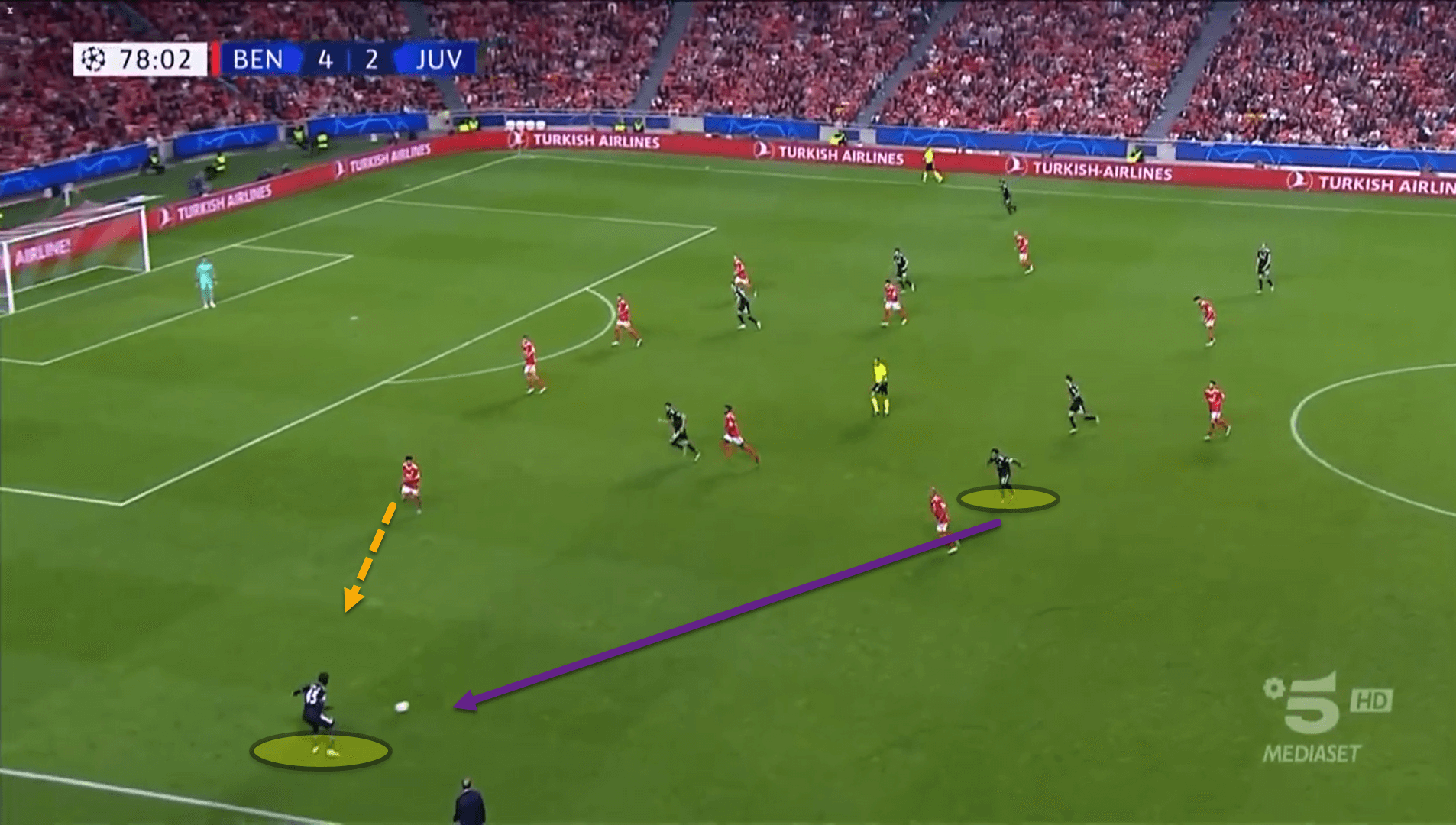
Here, Alex Sandro is positioned in the inside spaces, as he so often does. Benfica’s defensive block is being stretched by the wide positioning of the English youngster and when Juventus need to go out to the flanks because the middle of the pitch is being congested by the defending team, he is a superb outlet for them to do so.
The Bianconeri can also break through the opposition’s defensive block by having him hugging the touchline. When access through the middle is blocked, the players quickly switch to Iling-Junior who can then take on his fullback before the defensive unit shifts across, unbalancing their set-up.
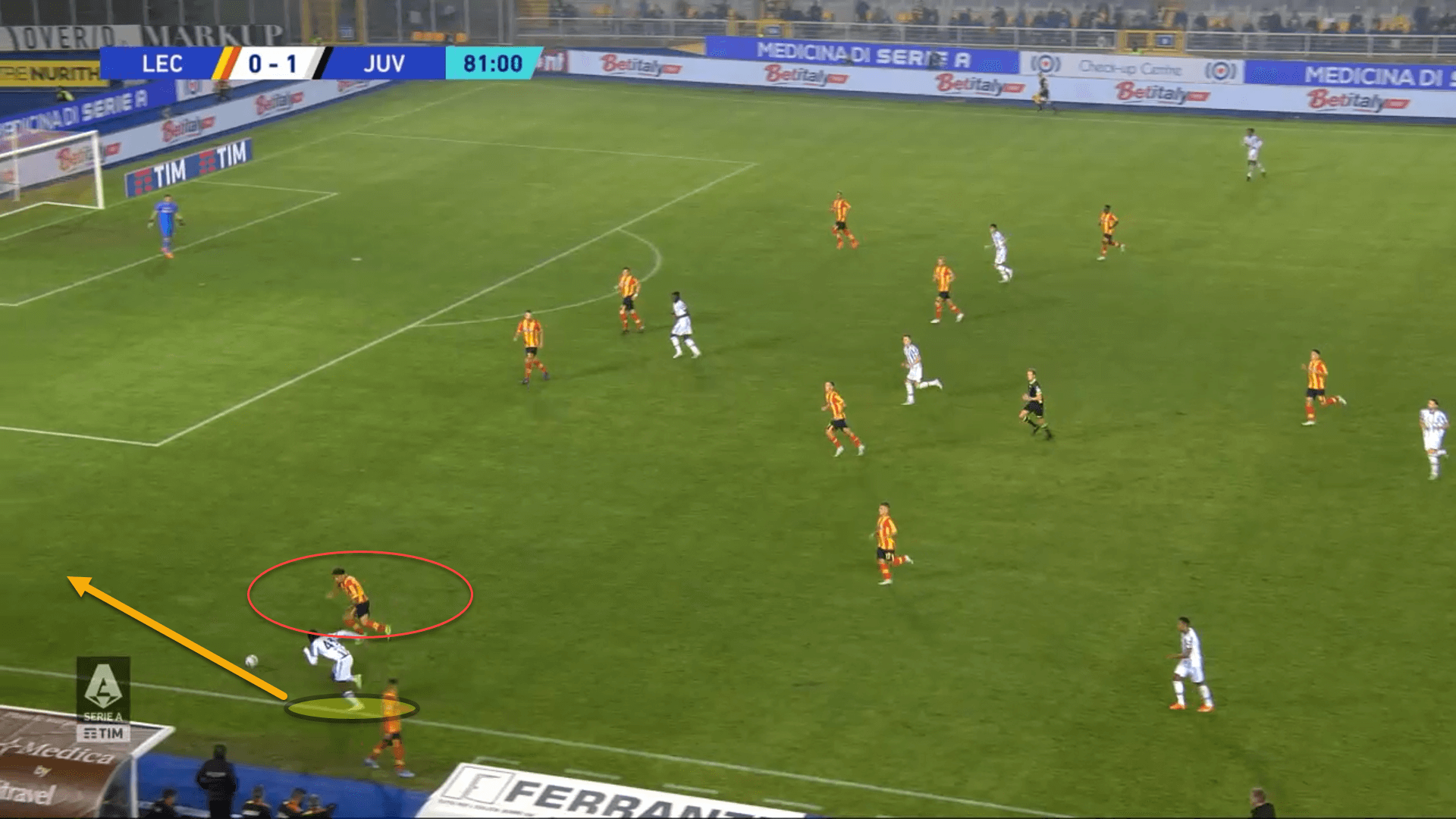
In this image, this exact scenario has come to fruition. Juventus rapidly switched it out to Iling-Junior in acres of space. The 19-year-old then proceeded to take on the Lecce fullback, killing him for speed, power and agility, to get into an advanced position to cross into the box.
This season, the teenager has averaged 5.72 dribbles per game which is relatively high considering his minutes have been diluted by late substitute appearances in the first team. From these dribbles, Iling-Junior is succeeding in exactly 57.1, an excellent output from the wide player.
In fact, this dribbling ability that the youngster possesses is a stupendous tool for his team to progress higher up the pitch. In an age where many teams want to play their way through the thirds to pin back the opposition, dribbling is sometimes an underutilised tool.
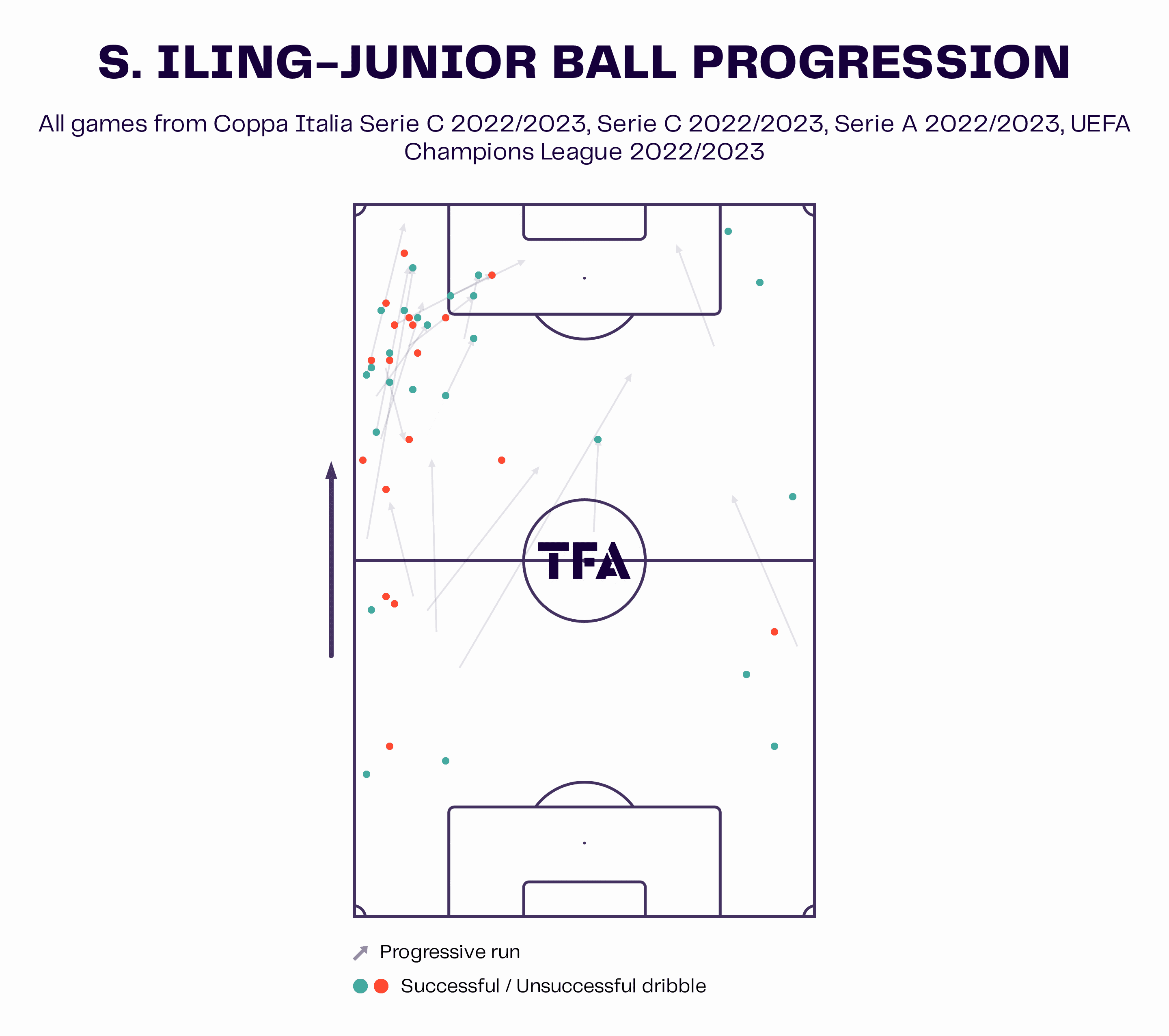
As this data viz highlights, Iling-Junior’s progressive ability to carry the ball for his side is exceptional.
Furthermore, the young winger also excels when carrying the ball into the penalty area and has boasted 22 penetrating carries in all competitions in the current campaign.
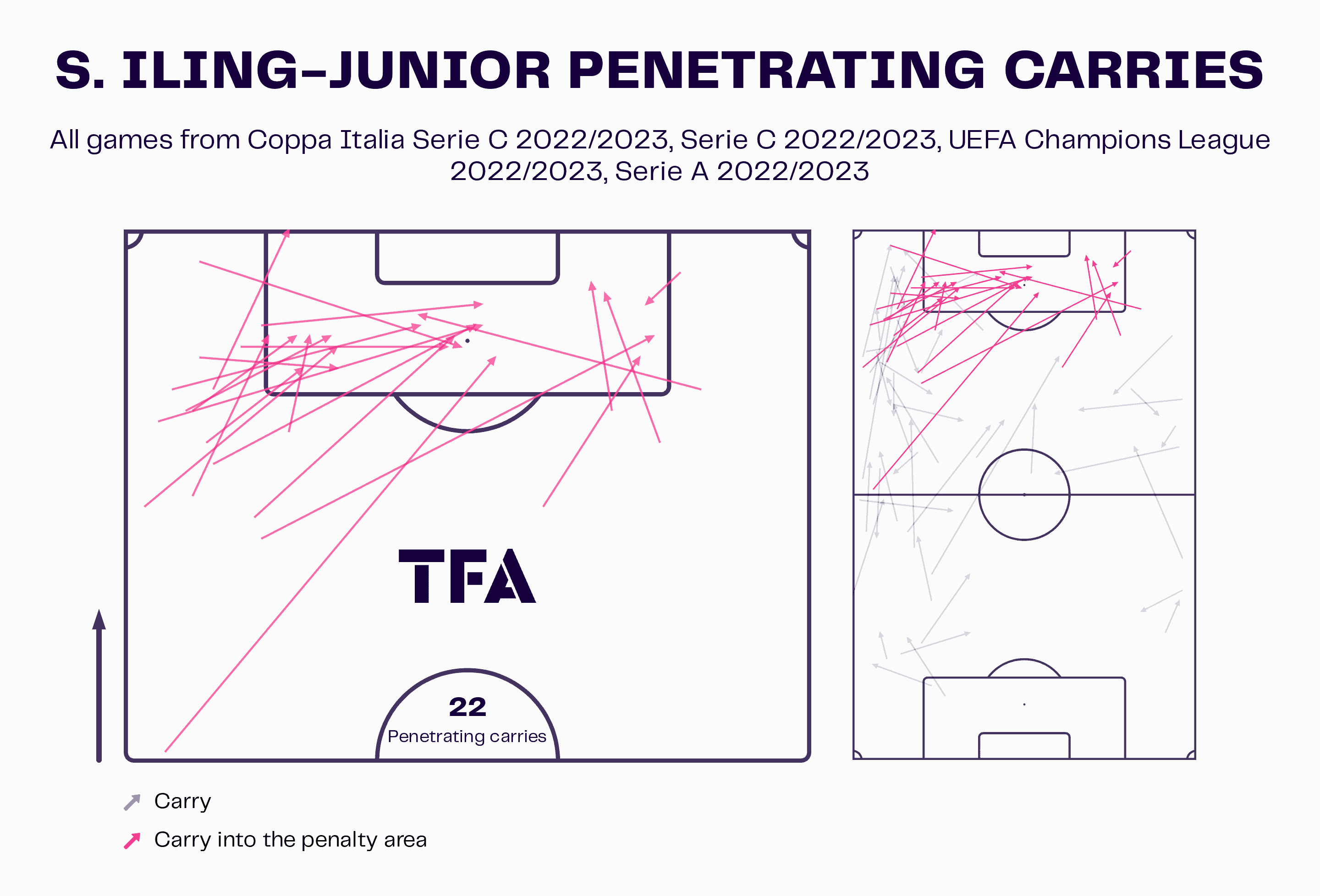
What is even more impressive is his creative output for the first-team and Juventus Next Gen. Again, playing into the old-school winger narrative, Iling-Junior likes to beat his man and whip rapid balls into the penalty area.
In the 2022/23 campaign across all competitions for the U23s and Juventus’ professional side, Iling-Junior is averaging 2.47 crosses per game with a ridiculously high accuracy of 66.7 percent.
Excellent deliveries are where Iling-Junior gets most of his assists too, and he’s currently averaging 0.58 assists per game in 13 appearances for Juventus this season.
Against Benfica in the 4-3 thriller in Lisbon, the academy product showcased his greatest skills to the world, beating the Portuguese team’s fullback constantly in his cameo appearance and playing a massive helping hand in giving Juventus a lifeline back into the match.
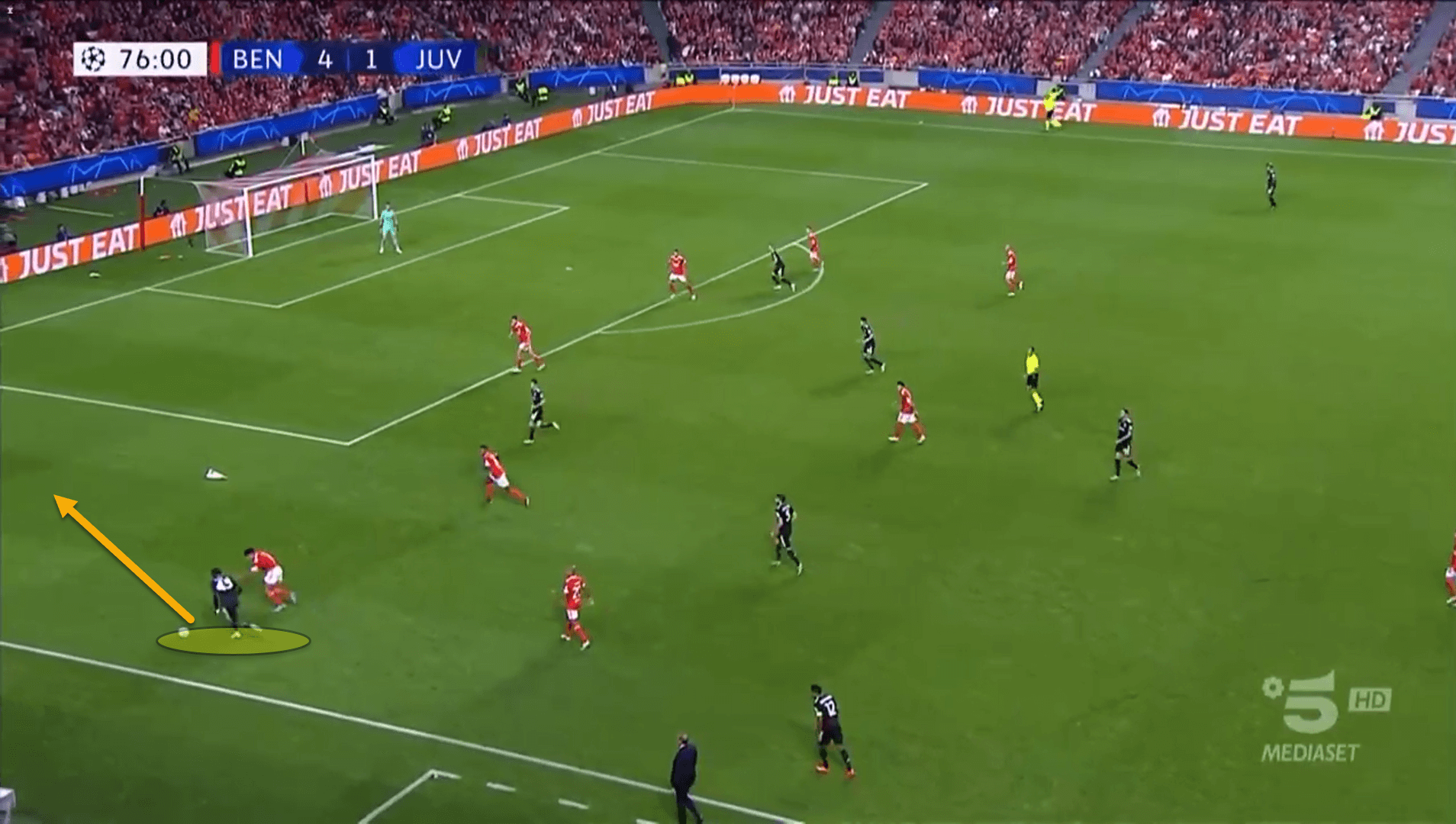
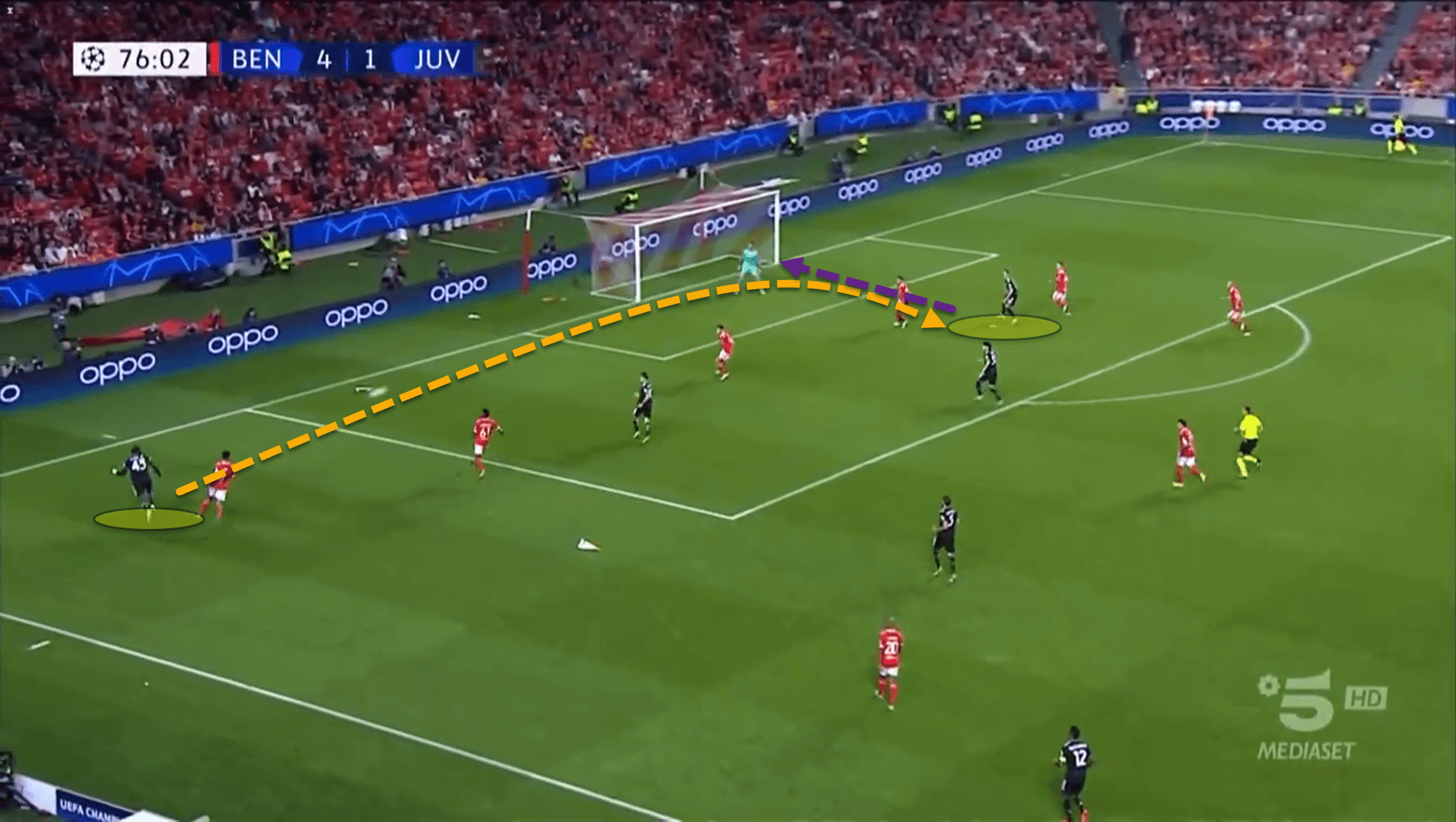
Iling-Junior always likes to receive on his back foot, which is his stronger left foot. To do this, he keeps an open body shape which leaves him susceptible to losing the ball.
However, he does this in order to entice the defender to try to step in and nick the ball before quickly pushing it by them, killing them with his speed and then whipping a ball into the box. The previous images showcase all of these strengths, and his cross was pinpointed to the foot of Arkadiusz Milik who placed it home.
A threat in front of goal?
Despite playing very wide during games, Iling-Junior still contributes to the team with goals and has exhibited this during his time in Turin.
Since the beginning of last season, the youngster has scored 10 goals in all competitions for the Old Lady and is outperforming his xG of 6.27.

Iling-Junior isn’t a prolific goalscorer. While still chipping in with a couple of goals, his style of play makes consistent scoring difficult due to positioning himself so wide. As can be seen from the player’s xG map, most of his goals come from the left side of the box, drilling it low into the bottom right corner with his left foot.
On top of this, his shots are averaging a relatively low xG of just 0.09 per strike. This shows that Iling-Junior is shooting at tight angles.
Most of his chances are self-created too, coming from dribbles into the penalty area where he can take a shot at goal.
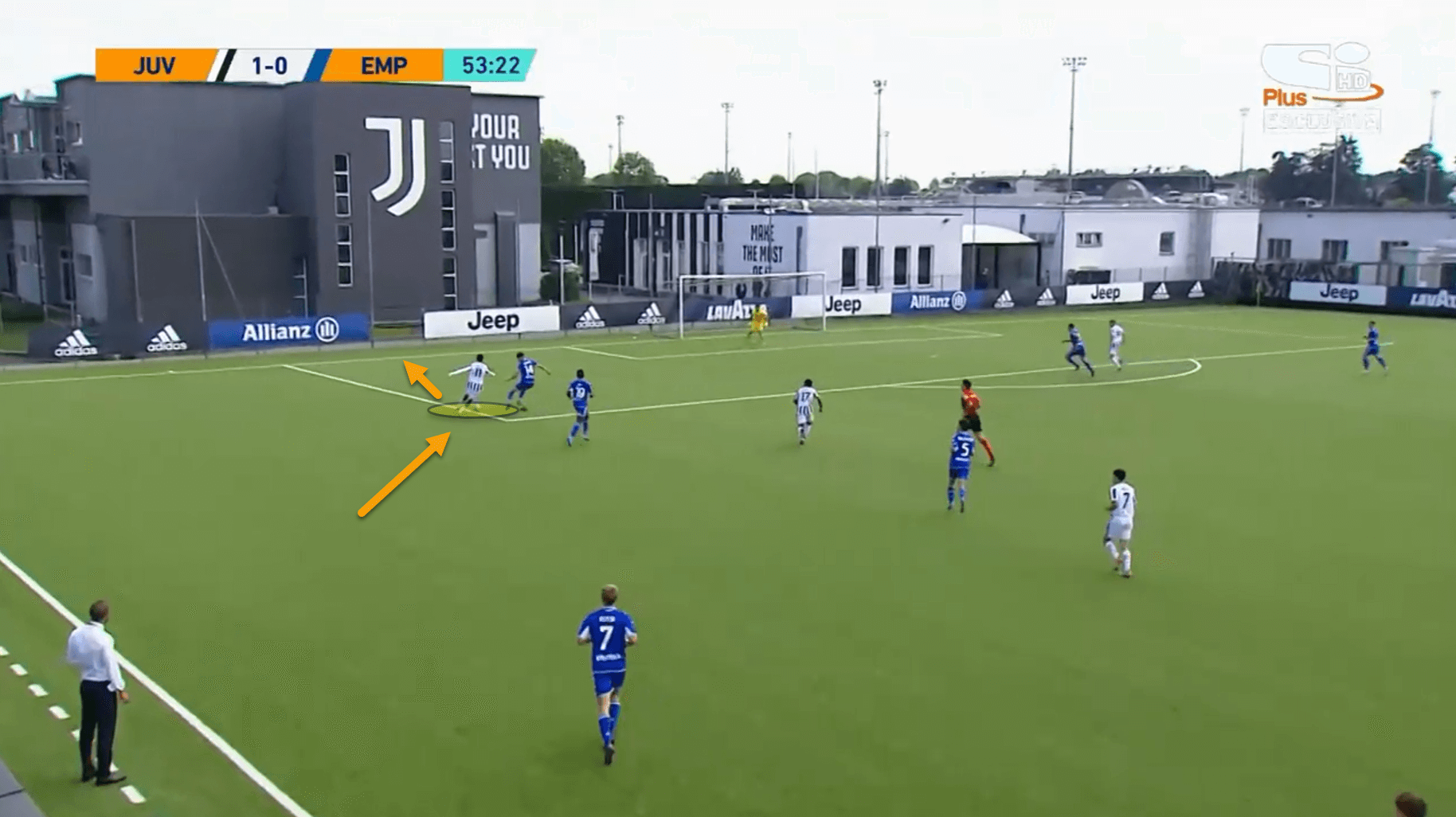
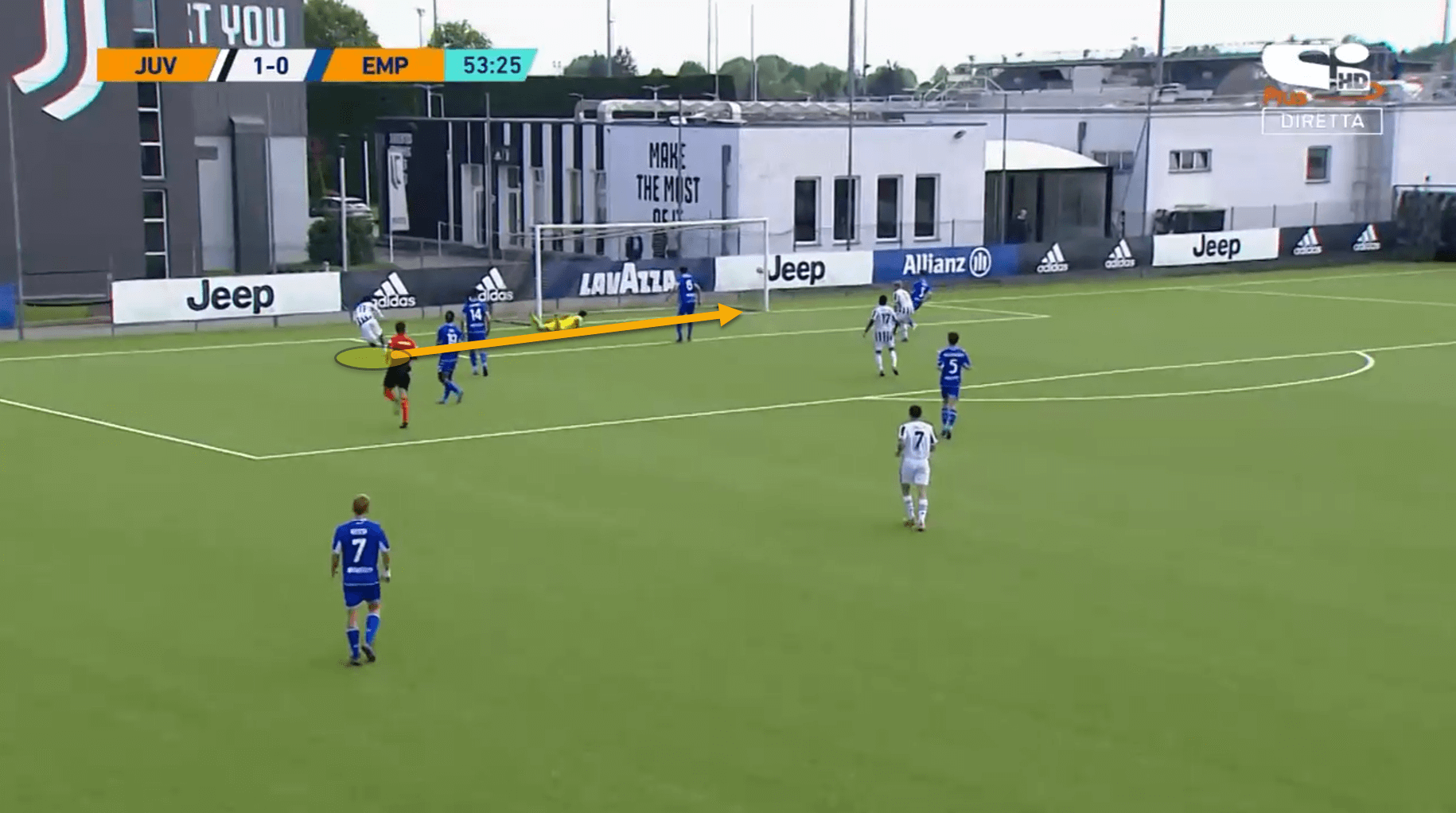
Coming inside from the left, the winger takes on the defender, beating him on the dribble and leaving him for dead before smashing it low and hard past the goalkeeper.
This is quite a common method that Iling-Junior uses to score goals, but the tight angling of his shots makes it hard for him to score as goalkeepers are quite comfortable making saves from these positions since they can cover both the front and far post at the same time.
Each shot needs to be hit ferociously by Iling-Junior for him to be able to put the ball into the net. That being said, a fierce shot is certainly a tool that the winger possesses.
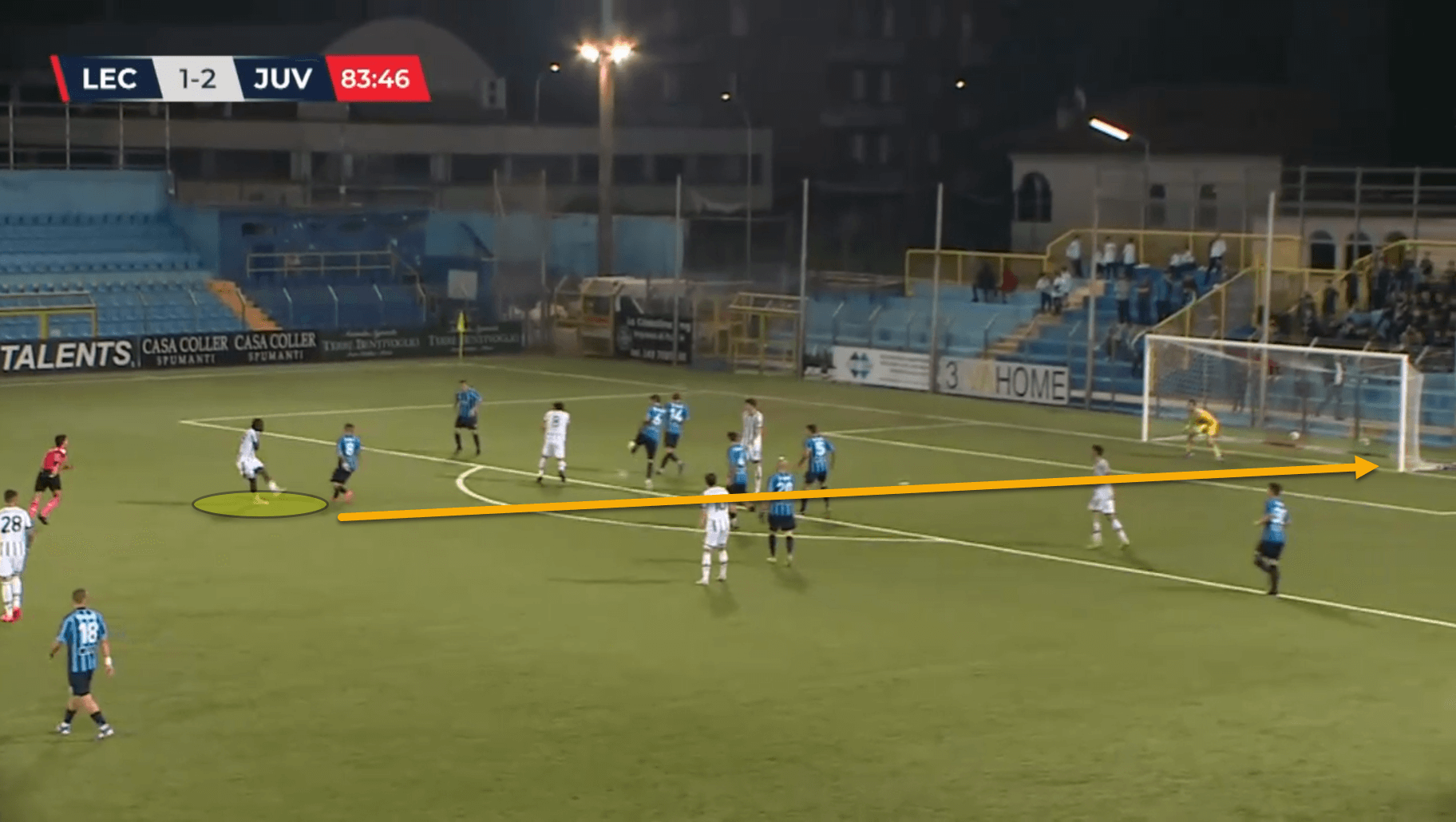
The player’s left boot is unbelievably powerful. In this image, Iling-Junior received the ball on his backfoot, setting himself to shoot but doesn’t have the room to take a step back and unleash the ball. However, he doesn’t need it.
From a standing position, the youngster smashes the ball low, hard and accurately into the bottom corner past the goalkeeper in what was an unbelievable finish by the former Chelsea man.
Unfortunately, regular goalscoring is not part of Iling-Junior’s arsenal just yet and may not be unless he is moved over to the right where he can cut inside and shoot from better angles.
Pressing and defensive nous
As already stated earlier in this analysis of the player, Iling-Junior has prior experience playing in defence and it shows in his overall game out of possession.
This season across all competitions, Iling-Junior has registered 3.62 interceptions on average per game as well as 4.9 ball recoveries.
The winger has amazing recovery speed to get back and help out defensively which allows him to offer more protection to the Juventus backline when the opposition are in the final third.
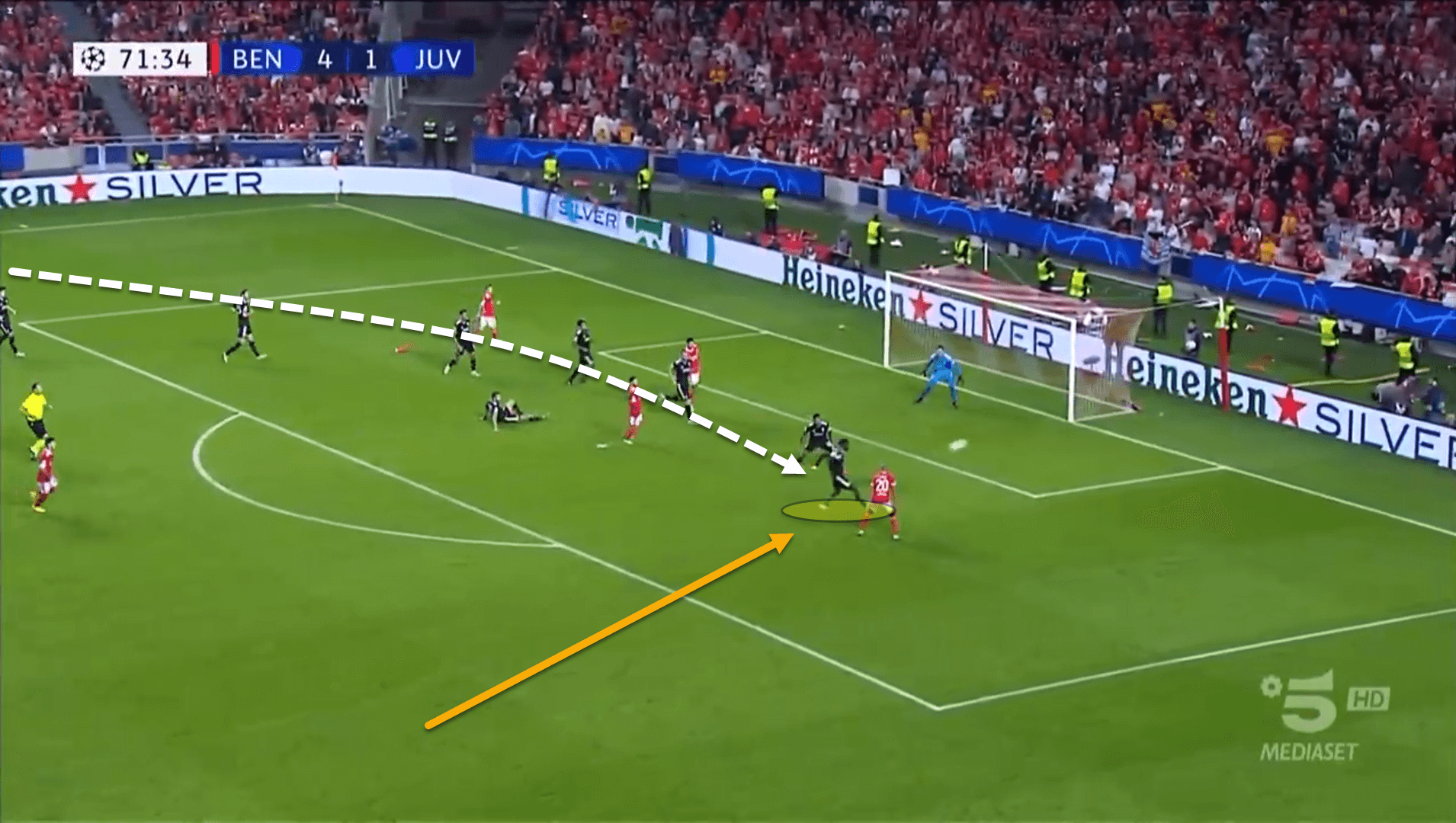
In this example, Benfica were in the final third, looking to bag their fifth goal of the match. Iling-Junior nipped in at the last second to poke the ball away from Benfica’s player in a dangerous area inside the box.
It was a vital interception from the Englishman which allowed Juventus to get back into the game. Had the fifth gone in, it would’ve been over there and then.
Iling-Junior’s pressing leaves a lot to be desired though.
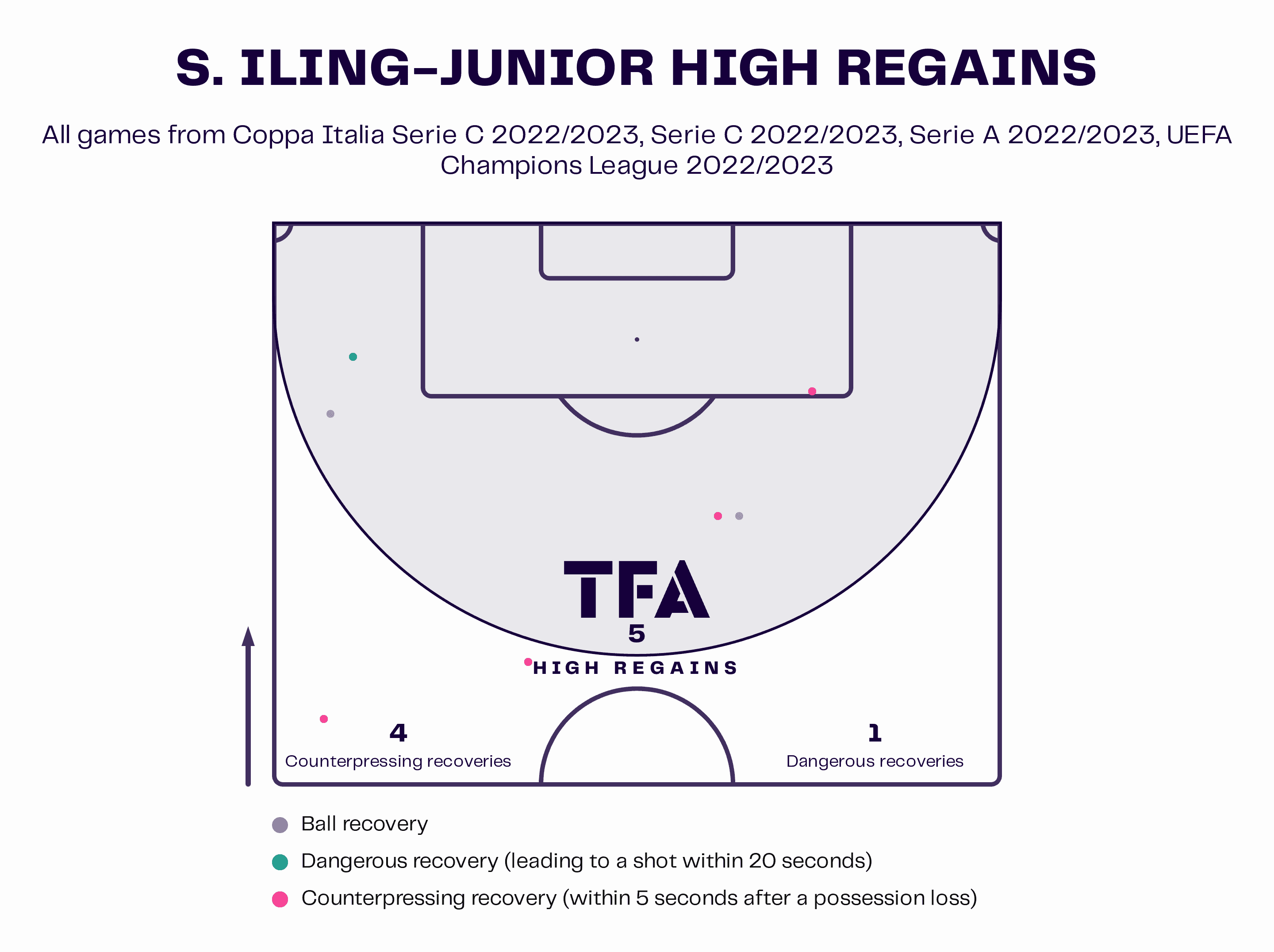
So far, the youngster hasn’t been great when it comes to pressing higher up the pitch and even when Juventus are sitting in a mid-block with just five high regains, four counterpressing recoveries and one dangerous recovery.
This is not necessarily his fault. Juventus, across both the U23s and the first-team, are not the most intense pressing side, preferring to drop into a deeper defensive block, hence why so few goals have been conceded this season.
Nonetheless, there have been issues with the player’s pressing. Iling-Junior possesses incredible speed, meaning he should be able to get across to his man in time to apply pressure on the ball. However, quite often, he mistimes his jumps, stepping in either too early or too late.
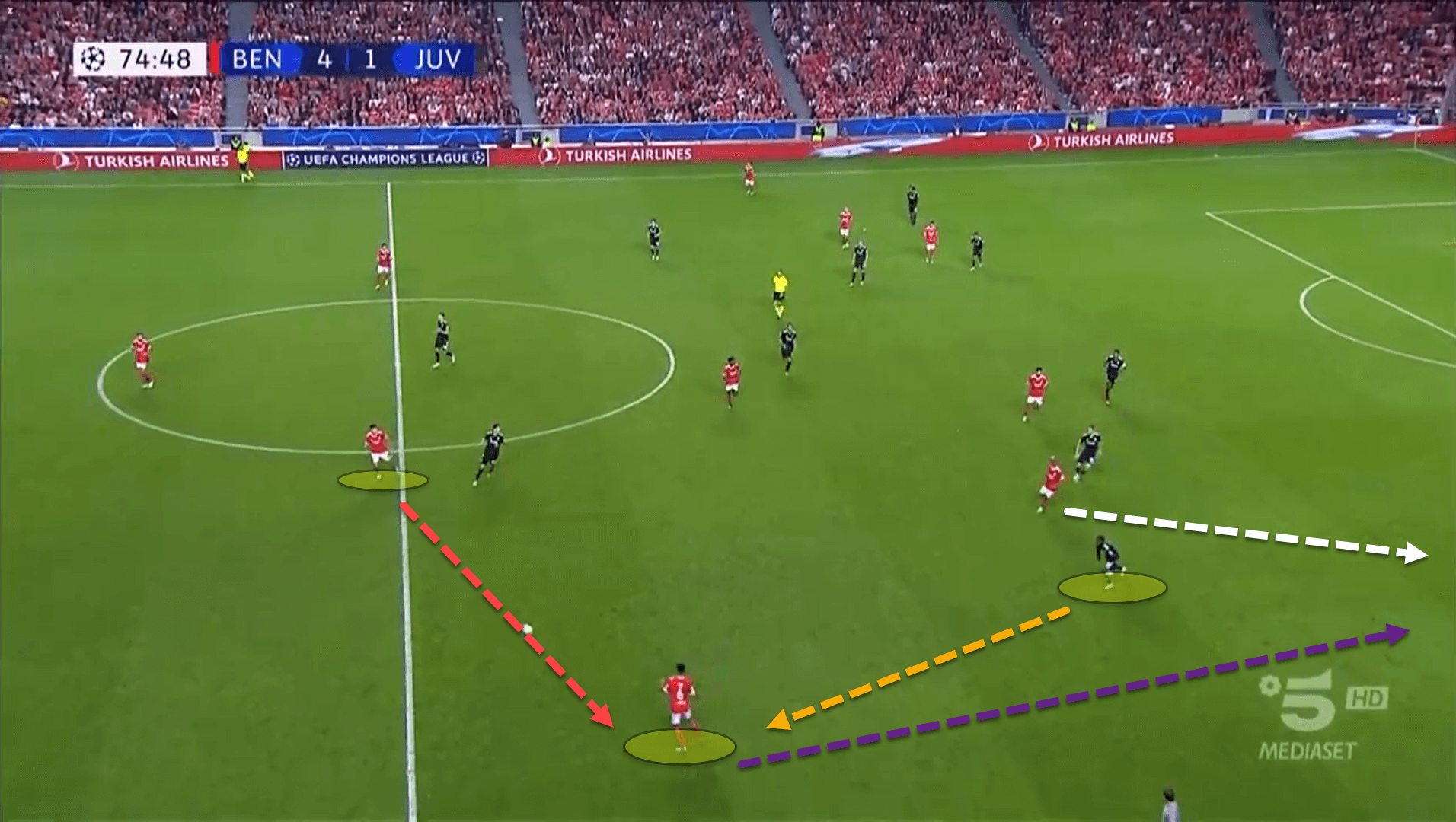
Here, Iling-Junior holds his run when the Benfica fullback is receiving the ball but steps in far too late, allowing the ball carrier to open his body up and play down the line past the onrushing winger and into a teammate.
Iling-Junior should have begun to close down his man as the ball left the foot of the initial passer but instead waited until the receiver had control of it.
There are also quite a lot of times when Iling-Junior goes in too hard in tackles, causing him to give away fouls. The Juventus player has averaged 1.84 fouls per game during his time in Turin which is ridiculously high and has also received 0.15 yellow cards per match.
He is still quite young though and so Iling-Junior will become better in his defensive game over time with the first team, training with top defensive players week on week.
Conclusion
It is easy to see that Iling-Junior could be a top player one day, whether it be at Juventus or elsewhere. Right now, he is certainly in the correct environment to continue his development, especially if he becomes a mainstay in the squad under Allegri.
The biggest issue with the winger is his style of play. Many clubs have followed the model of using inverted wingers, such as Chelsea, Manchester United and Liverpool but Iling-Junior is better when hugging the touchline which is a contrast to the tactical setup of some of the biggest teams in the world.
Nonetheless, some massive teams such as Manchester City and Arsenal prefer their wingers to stay wide as Iling-Junior does and so it may just be a case of picking the right career move should he ever leave the Allianz Stadium.

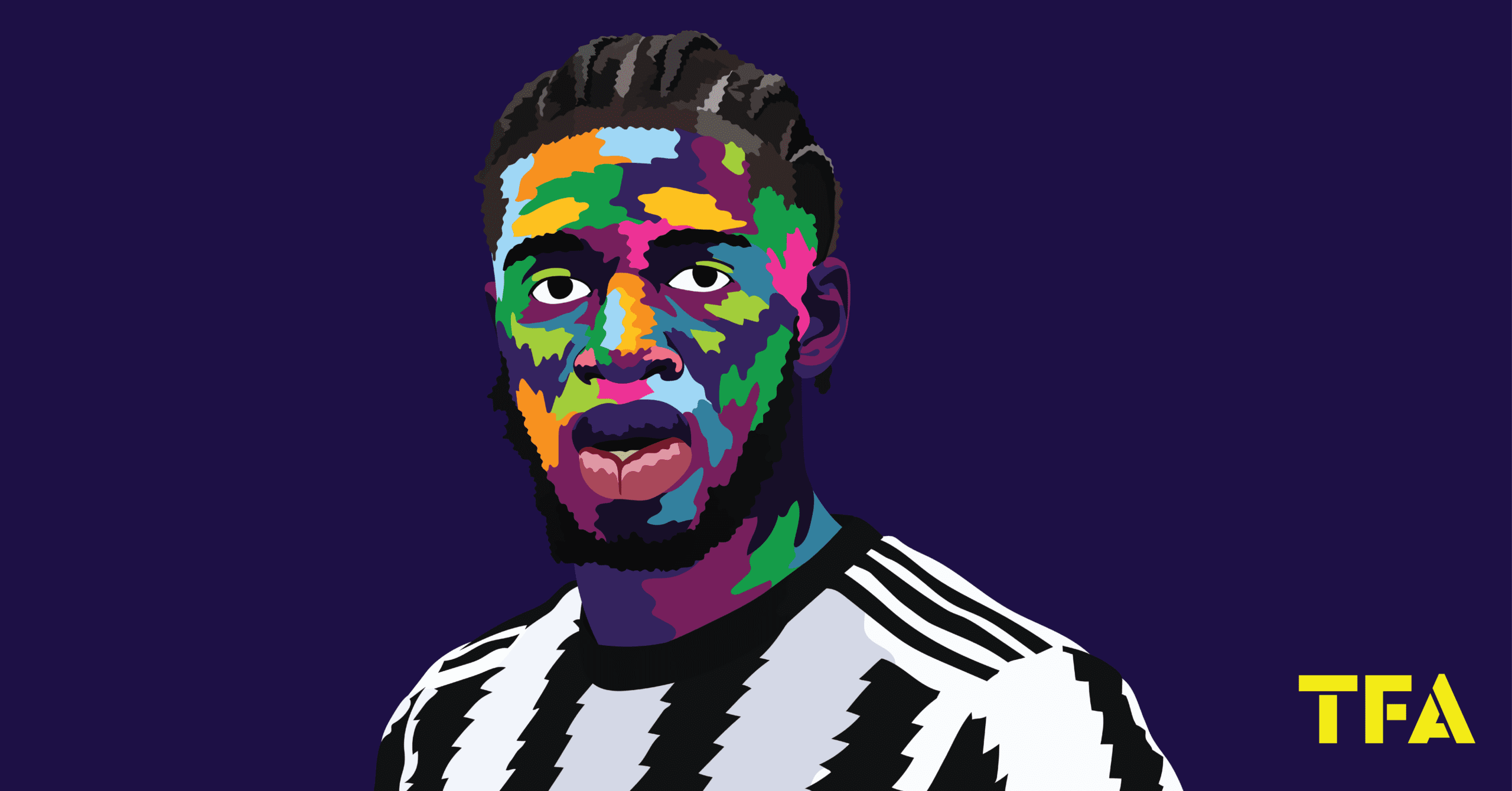




Comments